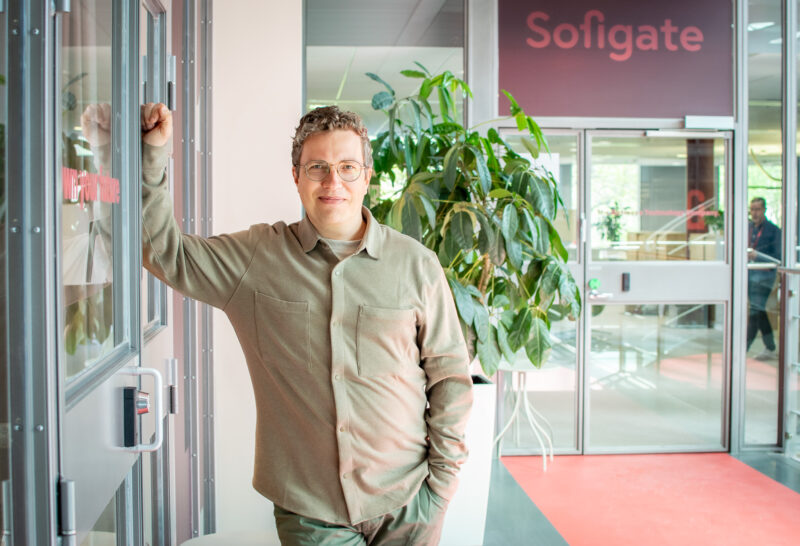Forget hierarchies: productivity requires a new kind of collaboration
Business technology can revolutionize the productivity of a company. However, a productivity leap requires dismantling traditional organizational silos, Business Technology Forum’s Tia Jähi and Sofigate’s Mikko Saari claim.
The traditional perception is that the organizations of large Finnish corporations are strongly siloed: in other words, the units, teams and individuals of the organization work apart from each other without sufficient collaboration. The left hand doesn’t know what the right one is doing, and occasionally the right hand might even complicate the efficient working of the left hand.
Sofigate conducted a market survey last fall regarding technology investments done by large Finnish corporations, which further reinforces this perception. As much as 69 % of the business executives who responded to the survey agree that one organizational silo, most often the IT department, is usually alone or partly responsible for the value creation of technology projects.
Technology is such an essential part of every organization’s operations that it is no exaggeration to say that today, technology is business and business is technology. Even the best technology cannot efficiently generate benefits for the business, if the different parts of an organization do not work together – let alone the utilization of AI features.
There are multiple obstacles in front of a productivity leap enabled by technology. This does not mean that it’s not achievable. There are multiple reasons for why only one fifth of company executives say investments in technology have led to significant raise in productivity; siloing is one of them.
Forget traditional hierachies
A productivity leap requires co-operation on every level of the organization – and breaking silos.
There is still often a gap between for example business and IT. It slows down the productivity of the whole organization and at worst can even lead to the failure of an entire development project. Business management needs to understand the possibilities of technology, and technology management needs to internalize the business strategy and its goals. When technology is no longer a monopoly controlled by the IT department, it’s possible to create solutions that genuinely support business.
Project groups crossing organizational disciplines are necessary for building equipment that supports development. This usually requires fitting together different ways of working and work cultures both between different project teams and within them. Therefore, it is good to have bridge builders, for example HR professionals familiar with technology or IT specialists who understand financial management, working in projects. Even the best technology won’t serve its users, if it is built on the terms of technology rather than its users.
Do not let traditional hierarchies and silo mentality stand in the way of a productivity leap. The most skilled workers can be found in surprising places, and project experience raises enhances each member’s expertise.
From goals to reality by utilizing ready-made models
Everything begins with goals. In any project the goals need to be crystal clear to both the project team and its stakeholders: it’s important to understand, why change is desired. Goals need to be measured in metrics focused on business benefits.
For example, if your company’s AI project’s primary goal is to speed up cash flow, the project cannot be seen as successful if the cash flow doesn’t accelerate – even if the project successfully stayed on schedule and within budget.
The key is to reach set business goals. That’s why leading a project that combines technology and business is primarily change management – both during and after implementation. It is impossible to reach goals if change is not actively managed, because change is born through people. This is also why project teams need to be selected based on goals rather than organizational charts.
In project management it’s good to use tools that have been proven effective, such as BT Standard, which was designed for planning, building and managing business technology. The open-source model brings together the best practices on how an organization’s strategy is translated into a plan, how the plan is broken down into capabilities to be developed, and ultimately how it is transformed into tangible business benefits. You can also find ready-made project roles and their descriptions in Standard.
Towards a productivity leap – ask Otso for help
If you want to aim for a productivity leap, follow this recipe: identify the right members for the project team, define the appropriate roles for each member and an operating model for the team that aligns divers work cultures and ways of working. Set clear goals for the project and metrics for those goals. Remember that when you’re managing a project, you’re managing change.
Change management isn’t easy but thankfully help is available. You can receive practical sparring even from some surprising entities, such as the Otso AI bot that is based on BT Standard.
There is a huge productivity leap hiding in Finnish companies that can be released by dismantling useless barriers from the way of co-creation. This is the only way to fully leverage the potential of existing technology. The steps towards a productivity leap can be found in the results report of our market survey – download the report here.
In the beginning of the year we will review ways in which your company can make a leap towards higher productivity. In the previous part we talked about raising the bar on your own goals and in the next two we discuss genuinely engaging the employees and growing organic change capability.
Authors:
Tia Jähi works as Business Executive in Sofigate Group’s Business Technology Forum, that develops and shares open business technology management framework, BT Standard. Tia believes that roles co-developing business and technology are a crucial factor in ensuring the benefits of technology investments.
Mikko Saari manages Sofigate’s Business Technology Integrator business, which combines ready-made comprehensive IT services, business technology design and management services and the world’s leading platform solutions.


